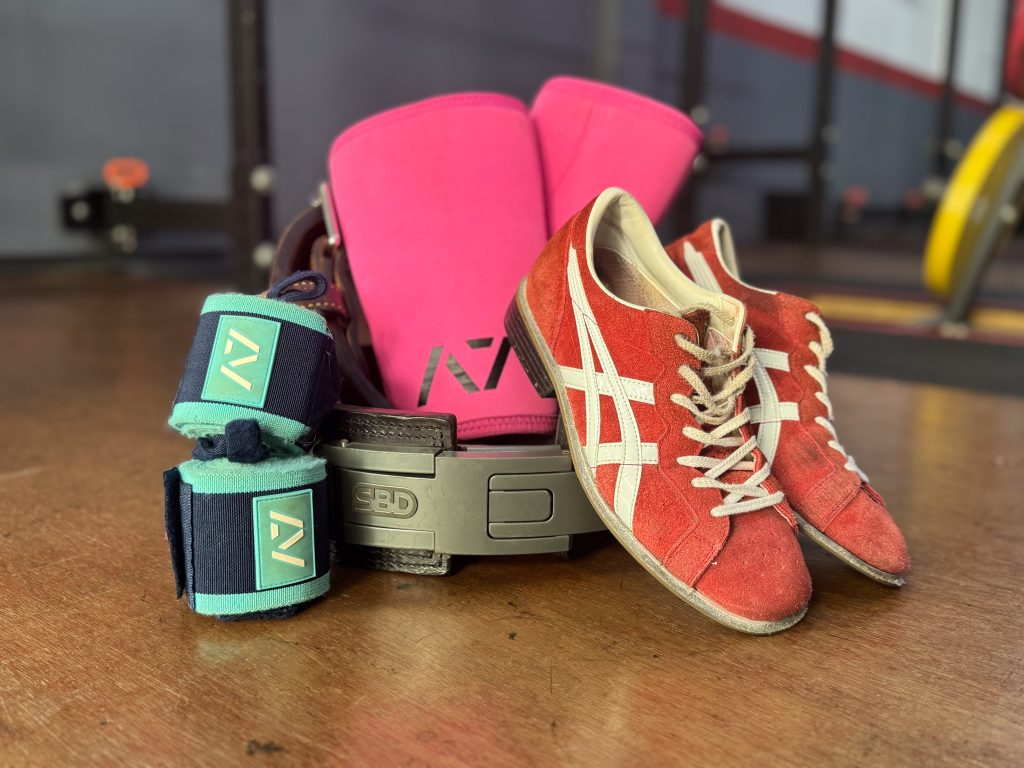
Any time I pick up a new hobby, I feel compelled to buy everything that can make the experience that much more enjoyable. When I first got into building Gundam models, my favourite purchase was a pair of $80 Japanese nippers. The axle between the blades never got creaky — every snap off the plastic frames felt tangibly euphoric. Paired with my $45 sticker tweezers, even applying decals to the plastic pieces felt ritualistic.
These items were recommended by the nerds on Reddit, in the subreddit r/buyitforlife. Basically, the idea is that these products either last so long you never have to buy a replacement, or the manufacturer’s production standards have stood the test of time, ensuring that any new purchase will match the same quality.
So, when new lifters get excited about strength training and start asking what personal gear they should buy, you can bet I’m fully on board. Equipment can be expensive — some pieces cost up to $500 — so I always recommend acquiring them one at a time as needed. These wardrobe essentials, gym gear, and accessories can last you a long time if you take good care of them. I’ll cover everything you need — from shirts and pants to optional items worth considering as you progress through your training career.
Clothing: Training Tops, Pants, and Socks
Tops
Cotton tees are the way to go when training. They make a huge difference, especially during squats and bench presses. The bar rests on your back, just below the spine of your scapula, where your rear delts contract to create a stable “shelf” to support it. A cotton tee helps wick sweat from your skin and provides enough friction to keep the bar from slipping.
Because of that, tank tops that expose your sweaty skin are discouraged, as are silky materials like Dri-Fit, which become even slicker when soaked in sweat. You definitely don’t want the bar sliding off your back during squats or losing position while benching — especially when the weight gets heavy.

You can also consider getting a top that has a silicone grip (known as “Bar Grip”) integrated into the upper back area of the shirt. So far, we’ve really liked what A7 has done — so much that we even customised their performance shirts with our gym’s logo. Do note, however, that these are not allowed in some competitions, such as IPF-sanctioned (International Powerlifting Federation) meets.
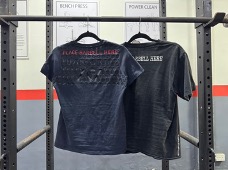
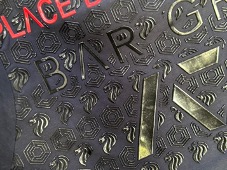
Bottoms
And since you’ll be squatting, you need to wear bottoms that won’t tear, or at least won’t prevent you from missing squat depth. As you approach the bottom of the squat, your knees shove out as you bend at the knees and hips. Fabric stretches across your crotch area as it also simultaneously gathers into the creases around your hips — between your pelvis and thighs — and behind your knees, bunching up in the knee pits. If the fabric of your pants is too stiff or can’t stretch sufficiently with you through the range of motion required to hit depth, the feedback from the tightness of your pants will fool you into thinking you’re squatting deep enough. With your coach demanding that you squat to depth, chances are your pants might rip at the crotch when you keep trying to go lower
I’m not too worried about the ladies — most of us already have a pair of leggings or stretchy pants ready to go. But I’ve personally witnessed three men tear their training pants mid-squat. Shorts, bermudas, or long pants without room to stretch will rip, usually right at the crotch seam. Don’t be that guy, please.
Your Own Lifting Shoes and Belt
The first piece of personal gear that coaches always recommend is a pair of lifting shoes. If your training budget allows for only one purchase, let it be a good pair of lifting shoes.
Imagine lifting in running shoes with soft, squishy foam soles — every time you drive your feet into the ground, some of that force is absorbed by the cushioning. The slightest perturbation changes the foam’s compression in multiple zones of the soft sole. Moreover, since the soles of your consists of knobbly balls and heels, complete with wriggly toes and a gap beneath the arch of your feet, mix it with pillows under your feet, you might not want to squat heavy in them after all.
Proper lifting shoes have a non-compressible sole that helps distribute force evenly across a flat sole, minimising instability whenever you’re lifting heavy. Most models come with velcro straps across the metatarsal of your feet, locking your foot down inside the shoe by removing any extra wriggle room. Whether you’re a serious competitive lifter or just training recreationally, a pair of well-made lifting shoes will be the best investment you’ll ever purchase for your training.
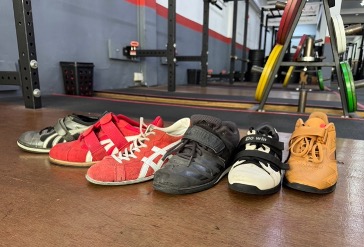
If you can make room in your budget a few months later, a leather lifting belt will be a worthy addition to your gym bag. Once you’ve learned the art of bracing hard (the Valsalva manoeuvre!), a tightly worn belt around your midsection provides feedback that helps you contract even harder. During a heavy lift, your torso needs to stay rigid to efficiently transfer force against the resistance — in this case, the weight on the bar. The belt gives you something to brace against, acting as a physical cue that reminds you to tighten up and stay solid. The belt’s presence reinforces hoop tension around your torso— as the muscles around your trunk contract, the muscle bellies expand against the belt and can only expand “inwards” into your gut, increasing abdominal pressure, which adds to torso rigidity.
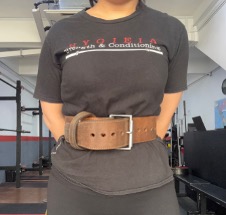
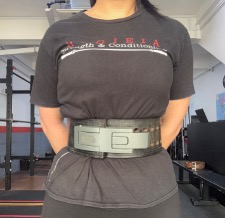
Lifting shoes come in a variety of designs, fits, and heel heights. Belts too, with different widths and thicknesses, leather and suede finishes, and even buckles to choose from. As the functions of these two integral pieces of equipment deserve much more than a few paragraphs’ description, head over to these articles written by Coach Shaun that provide a deeper understanding of what lifting shoes and leather belts can do to make a difference to your lifts. Coach Marvin has also come up with an updated shopping video guide on how you can choose the most suitable shoes and belt.
Compression Gear: Knee Sleeves and Wrist Wraps
A little compression around your knees and wrists with the aid of sleeves and wraps can go a long way to supporting you through a heavy set of squats or presses.
Knee Sleeves
Knee sleeves are like a nice warm hug, albeit a little sweaty by the end of your squats. Lifters with sensitive or previously injured knees often find added confidence when squatting with sleeves. The compression from the sleeves adds some pressure around the knee joint, acting like an extra layer of knee exoskeleton that tightens everything up. Lifters who have problematic knees before training have frequently reported that sleeves help make their knees feel less “jiggly” when squatting.
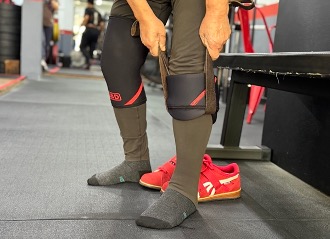
The pair of knee sleeves you will see most commonly in Hygieia is the SBD 7mm pair, and it is also our personal favourite. There are other brands that make their sleeves differently, such as the aggressively strong and dense Pioneer sleeves, and A7 Hourglass sleeves.
Wrist Wraps
Wrist wraps provide support and compression to your wrists, kind of like a tightly bound belt around the wrist joints. When the presses get heavier, the last thing you need is your wrists “bending backwards” under the weight. Wraps compress against the muscles around your wrist joint, minimising extension, reinforcing stability to help you press more efficiently. Tight wraps also give the physical cue to stay tight
Like lifting shoes and belts, wrist wraps also come in a large variety. These wraps come in different thicknesses, lengths, and material stiffness. SBD, A7, and Pioneer are a few brands to look at.

For Those Who Train Regularly At Commercial Gyms

Fractional plates
As you progress along your training, you will reach a point where micro-loading is necessary regardless of a heavy or light day. Most gyms do not carry plates in small denominations, so you will have to bring along a set of fractional plates. I find that one pair of 0.5kg and two pairs of 0.25kg are sufficient to make all of the weight combinations at a gym that minimally provides 1.25kg plates. If their smallest plate is 2.5kg, it’s probably a good idea to find another gym.
Chalk
Commercial gyms rarely provide chalk, but that doesn’t mean you should train without it. As your deadlifts get heavier, maintaining a solid grip on the bar becomes increasingly important. A bit of chalk goes a long way in drying sweaty palms and restoring grip confidence through added friction. Chalk blocks stored in a LocknLock container and liquid chalk are some fuss-free options you can consider.
Barbell Collars
Most gyms with strength training setups should have barbell collars, but in case they’re beat up and abused — or if they only have those troublesome spring collars — having your own pair is a nifty upgrade. The magnetic ones are especially convenient. Just be sure to keep an eye on them, though — they have a funny way of “walking off” when you’re not looking.
Meet Equipment
If you are preparing for a meet, you should already have all of the above equipment, just make sure that they are already sanctioned by the meet’s federation (e.g., IPF). However, there are a few pieces left that you may require:
Singlet
You will need to wear the singlet for all the lift attempts during a meet. Because of the tight fit around your body, it allows for meet judges to easily see your limbs in order to determine squat depth, glute contact on the bench, and lockout position in the deadlift. However, it might not be necessary to train wearing one all the time, maybe just two weeks before the meet to get used to squatting in the singlet.
Barefoot Shoes
For some of you who deadlift without shoes, you will need to invest in a pair of barefoot slippers if you will be competing in a meet, as you will be required to wear shoes. If not, stay happy lifting with your real bare feet!
Deadlift Socks
Socks aren’t exactly essential during training, as you can technically train sock-less. However, if you are intending to compete in a meet, the deadlift requires a pair of high socks that cover your shins up to right below your kneecaps. Plus, the socks are also helpful if you prefer keeping your shins covered during deadlifts. Those without long socks: long leggings and pants protect your shins too.
Building Your Training Arsenal
You don’t have to buy everything on the list — just whatever best serves your training needs. But if you’re like me, someone who finds value in personal gear that adds joy to an almost ritualistic activity, a few of these items can transform dull, sluggish sessions into genuinely enjoyable workouts.

